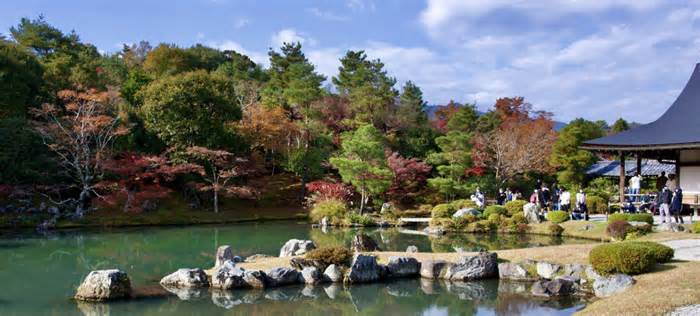
Arashiyama Tenryu-ji Temple is a UNESCO World Heritage Site. It is located in the center of Arashiyama and is one of the five most important Zen temples in Kyoto. Its Sogenchi Garden is a nationally identified historic site and a popular attraction for visitors from around the world. The temple and lawn are open to visitors throughout the year and attract many devotees and tourists.
Tenryu-ji Temple Background
The Tenryu-ji main temple is a significant historical site that is steeped in Japanese history. It was constructed in 1339 in memory of Emperor Go-Daigo and belongs to the Rinzai sect. The temple was built in place of the former Emperor Go-saga’s Kameyama-den, a palace that once stood on the same site. The temple is known for its exquisite architecture and beautiful gardens, which are considered some of the best examples of Japanese garden design. The temple has faced numerous challenges over the centuries, including eight major fires, but it has been rebuilt and restored to its former glory. The current temple complex was reconstructed in the 19th century and features stunning traditional Japanese architecture and serene gardens. The temple also houses numerous important Zen artifacts and artworks, including the famous painting “Dragon emerging from the clouds.”
The temple’s Hojo, the main building, is a masterful example of Japanese style; Its painted sliding doors and intricate wood carvings are simply stunning. A stop at the temple is a must for those interested in Buddhism, Japanese history, or classical Japanese architecture. Inside the Hojo, tourists who stop by can see a symbol of Shakyamuni. The Buddha sits at the altar, surrounded by a non-violent environment conducive to meditation and introspection. The Hatto, or Dharma Hall, is another highlight of Tenryu-ji Temple, with symbols of Shakyamuni Buddha. and his two main bodhisattva disciples.
Click here for more.
